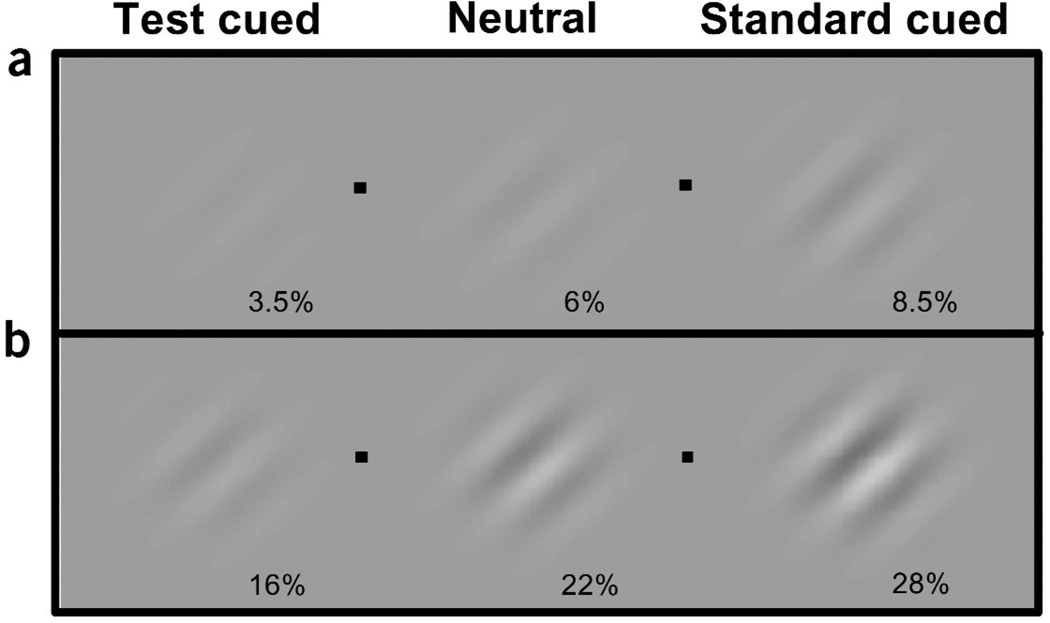Figure 4.
Effect of covert attention on apparent contrast. (a) If you were looking at one of the four fixation points (black dot), and the grating to the left of that fixation point that was cued, the stimuli at both sides of fixation would appear to have the same contrast. With attention, a subthreshold, 3.5% test contrast stimulus appears as if it were at threshold (~6% contrast). Similarly, a cued 6% contrast standard at threshold appears as if it were a more clearly discriminable 8.5% contrast stimulus. (b) Likewise, with high-contrast stimuli when a 16% contrast grating is peripherally cued, it appears as if it were 22% contrast, and a cued 22% contrast grating appears as if it were 28%.

